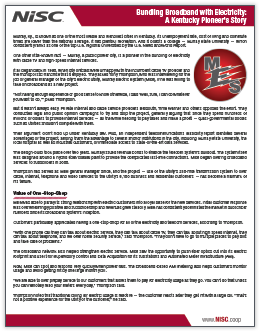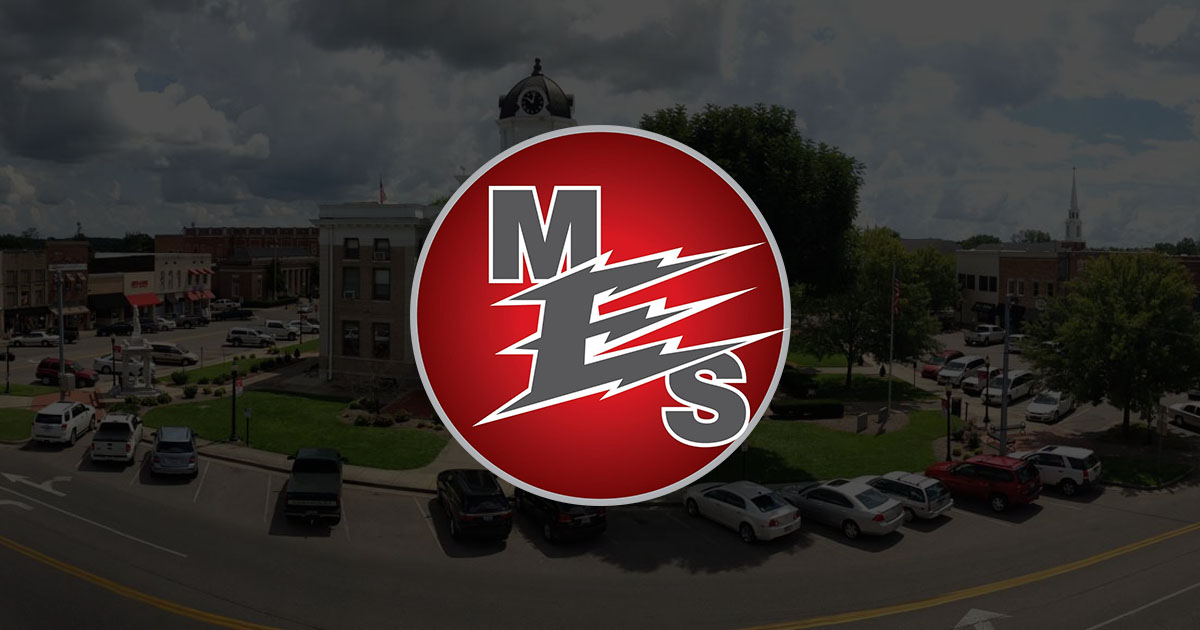 Murray, Ky., is known as one of the most livable and friendliest cities in Kentucky. Its unemployment rate, cost of living and commute times are lower than the national average. It has plentiful recreation. And it boasts a college — Murray State University — which consistently ranks as one of the top U.S. regional universities by the U.S. News and World Report.
Murray, Ky., is known as one of the most livable and friendliest cities in Kentucky. Its unemployment rate, cost of living and commute times are lower than the national average. It has plentiful recreation. And it boasts a college — Murray State University — which consistently ranks as one of the top U.S. regional universities by the U.S. News and World Report.
One other little-known fact — Murray, a public power city, is a pioneer in the bundling of electricity with cable TV and high-speed Internet services.
It all began back in 1996, when city officials were unhappy with the incumbent cable TV provider and the monopolistic franchise that it enjoyed. They asked Tony Thompson, who was interviewing for the job of general manager of the city’s electric utility, Murray Electric System (MES), if he was willing to take on broadband as a new project.
“Not having enough experience or good sense to know otherwise, I said ‘Well, sure, I can do whatever you want to do,’” joked Thompson.
But it wasn’t always easy. Private Internet and cable service providers Bellsouth, Time Warner and others opposed the effort. They conducted legal and public opinion campaigns to try and stop the project, generally arguing that since they spend hundreds of millions of dollars to provide internet services — all the while needing to pay taxes and make a profit — quasi-governmental bodies such as utilities shouldn’t compete with them.
Their argument didn’t hold up under Kentucky law. Plus, an independent telecommunications feasibility report identified several advantages of the project, among them the advantage to several anchor institutions in the city, including Murray State University, the local hospital as well as industrial customers, of immediate access to state-of-the-art data services.
The design-build took place over two years. Murray issued revenue bonds to finance the telecom system’s buildout. The system itself was designed around a hybrid fiber/coaxial plant to provide the complicated last-mile connections. MES began offering broadband services to subscribers in 2000.
Thompson has served as MES general manager since, and the project — use of the utility’s 250-mile transmission system to offer cable, Internet, telephone and video services to the utility’s 8,100 business and residential customers — has become a hallmark of his tenure.
Value of One-Stop-Shop
MES was able to parlay its strong relationship with electric customers into a loyal base for the new services. Initial customer response was overwhelmingly positive and subscribership and revenues grew steadily. MES has consistently dominated the market in subscriber numbers since its broadband system’s inception.
Customers particularly appreciated having a one-stop-shop for all of the electricity and telecom services, according to Thompson.
“With one phone call they can talk about electric service, they can talk about cable TV, they can talk about high speed Internet, they can talk about telephone, and we offer home security service,” said Thompson. “They don’t have to go to multiple places to pay bills and take care of problems.”
The broadband network also helped strengthen electric service. MES saw the opportunity to push fiber optics out into its electric footprint and use it for Supervisory Control and Data Acquisition for its substations and Automated Meter Infrastructure (AMI).
Now, MES can spot and respond very quickly when power fails. The broadband-based AMI metering also helps customers monitor usage and avoid getting hit by one large monthly bill.
“We are able to offer prepay service to our customers that allows them to pay for electricity usage as they go. You can’t do that unless you can remotely read your meters every day,” Thompson said.
Thompson noted that traditional billing for electric usage is reactive — the customer reacts after they get hit with a large bill. “That’s not a positive experience for the utility or the customer,” he said.
The AMI system also cuts down on bad debt, eliminates the need for customers to pay a large security deposit, and keeps customers “more in tune with their usage patterns,” Thompson said. As a result, customers begin to take ownership of their electric service and find ways to cut down on usage instead of getting sticker shock when they get a big $300 or $400 bill every month.
MES also leases its network to the local hospital and public institutions such as the university. And MES was able to provide fiber cable to enable police video monitoring of high crime areas. Thompson said this is not possible with traditional coaxial plant, “so the fiber gives you the ability to push a large amount of traffic across the network at a higher speed,” Thompson said.
Lessons Learned
In addition to its successes, the project also offered up some regrets and lessons learned. The lack of an all-fiber system dominates in terms of lessons learned.
At its initial decision point, MES knew fiber optics was seen as a revolutionary technology to add speed and efficiency to telecom systems. Since fiber optics was still in its genesis stage, its higher cost and limited track record caused MES executives to pass its promise by.
It built instead a hybrid coaxial network in which optical fiber cable and coaxial cable are used in different portions of the network to carry broadband content such as video, data, and voice. MES uses coaxial on the customer side of its system. But due to the inherent limitations of a coaxial plant, MES spends considerable time maintaining the quality of video and internet speeds because of ingress, sometimes referred to as “noise” or signal leakage, inherent to coaxial systems.
In retrospect, the utility regrets its decision. “No one in my opinion should consider any other architecture other than fiber to the home,” Thompson said. Fiber optics provides greater bandwidth and speed. It is also cheaper to maintain than coaxial. And because fiber optic cable is harder to “tap” or extract part of the signal than coaxial, it improves cybersecurity.
Another problem — MES must manage a rise in the cost of purchasing video programming, along with retransmission fees added by national broadcast channels. Predictably, MES has seen a continuing decline in video customers who are instead migrating to streaming services. Because of these problems, Thompson urges utilities to consider choices other than becoming a traditional video content provider.
Moving Forward with NISC Billing Services
MES continues to improve its broadband services. To bolster revenues, the utility is growing the Internet side of the business — along with a Voice over Internet Protocol service — which has become a core part of its telecommunications offering.
Of course, providing so many services creates greater complexity for the utility when it comes to customer billing. But MES is getting ready to make the process easier.
In moving forward to improve its bundled electric and broadband service, the utility recently signed on with National Information Solutions Cooperative (NISC), which will allow Murray to provide customers with a one-stop-shop for billing, payment and service offerings. The St. Louis-based information technology organization develops, implements and supports software and hardware solutions for more than 800 primarily-US based public power, electric distribution cooperatives, independent telephone companies, and other entities.
In addition, NISC’s iVUE Connect software will ease the administration of accounts for MES employees, bringing customer billing, service information, and metering plans together onto one aesthetically pleasing screen. The system also offers online time of use data, customer payment, and mobile work orders.
“It is of utmost importance that your billing and customer information software package is able to support multiple service offerings in a seamless manner, and also is able to offer advanced services such as prepaid billing,” said Tina Cox, who manages broadband customer services for MES.
The new software offers another advantage as well. It will make customer communication more proactive when power outages occur. “We’ll tell them before they tell us,” said Cox. The utility will be able to message customers about outages, restoration times and resolution of the problem.
Cox sees NISC as a partner that will help it maintain its already good customer relations.
“We want to ride that train,” said Cox, who described NISC as a class act. “They’re going to take us through the next century — they’re always thinking ahead.”
MES, too, is thinking ahead, and has made developing an all fiber network a high priority, essential to better service, “like building a four-lane road rather than a two lane,” said Thompson.
Looking back on their almost 20 years of experience in the telecom business, Thompson said that an electric utility becoming a broadband provider is almost a natural evolution.
“You already have most of the infrastructure that is needed. You have rights of way, easements, pole routes, and conduit, equipment needed to do the work, manpower, and most importantly a positive relationship with your customer base,” he said.
For more information about NISC enterprise software solutions, visit NISC’s website at www.NISC.coop.
This sponsored advertising feature was published June 25, 2018, by the American Public Power Association.
